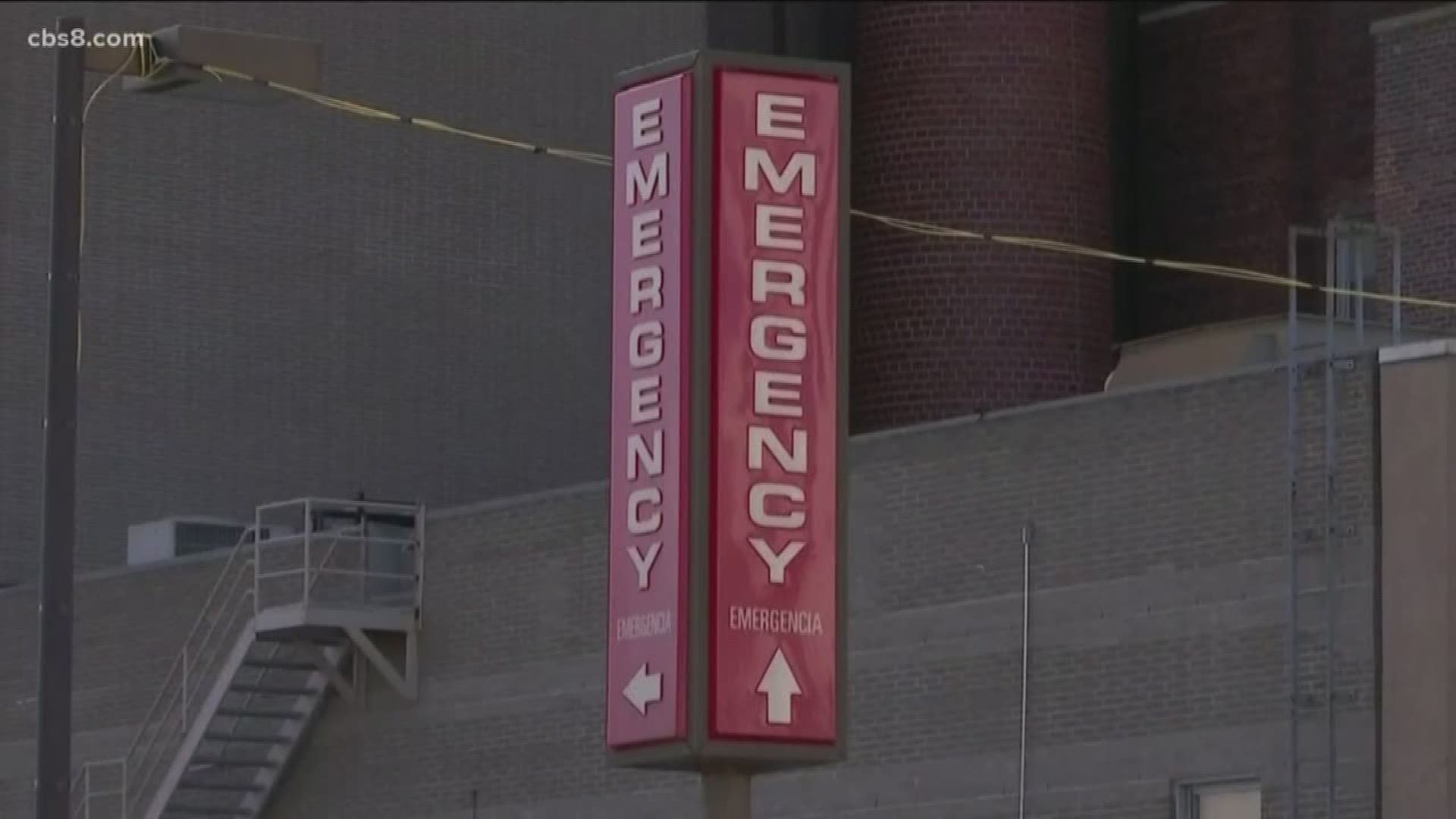SAN DIEGO — San Diego Mayor Kevin Faulconer and local leaders showcased Thursday how San Diego Public Library 3D printers are being used to make personal protection equipment (PPE) face shields for local hospitals to aid in their response to the novel coronavirus.
"Our doctors, our nurses, and hospital staff are in constant need of personal protective equipment - PPE - as I'm sure everybody knows that by now," Faulconer said. "The equipment, of course, keeps them safe so they can keep us safe - their patients safe. Our community cannot afford to have our medical staff compromised."
Last month, Mayor Faulconer issued an executive order to make the city’s library department’s 3D printers available to produce parts and equipment requested by the local health care community and hospital facilities to assist in the fight against COVID-19.
Mayor Faulconer said the idea to use the 3D printers started with a science teacher at Francis Parker School. Denver Guess saw the promise of using the printers to create PPE face shields. Guess spoke to hospitals, fellow educators and staff at the San Diego Public Library department about his idea.
Meanwhile, on the other side of the country, faculty members at Georgia Tech were creating schematics for manufacturing face shields for use in protecting health care workers, Faulconer said. Georgia Tech's designs were released to the public and made their way to local libraries' idea labs.
Library staff began working with staff at Scripps Health and Kaiser Permanente on using the 3D printers with the designs.
"Now San Diego Central Library is producing face shields for both hospital systems," Faulconer said.
Faulconer said the San Diego library system has 12 printers making about 50 face shields a day, or 300 per week. The face shields take about two hours to print and use materials that cost about $2.50.
The San Diego Library Foundation is funding the project and providing the face shields for free to local hospitals. The foundation has also committed to purchasing three additional high-volume 3D printers to aid in its efforts.
Chris Van Gorder, President & CEO, Scripps Health and Jane Finley, Senior Vice President and Area Manager for Kaiser Permanente both spoke Thursday about the importance of the face shields and showed examples of the ones their hospitals have already received.
Van Gorder said these kinds of face shields are "almost impossible to get right now" due to a variety of factors, including a lack of raw materials needed to produce them. In addition, the shields are not conducive for re-use due to a concern of spreading COVID- 19, meaning "most of them can be used once and have to be thrown out."
The mayor said the concept was born out of a "unique partnership" between local schools, healthcare organizations and libraries.
"A lot of San Diegans have come together to make this a reality," Faulconer said. "This partnership is going to save lives, truly."
----------------------------------------------------------------------------
View all News 8 coverage of coronavirus / COVID-19
News 8 has joined forces with The San Diego Foundation to raise immediate, emergency funds for our most vulnerable neighbors in need. Here is how you can help.
We also have a Frequently Asked Questions page we will continue updating with the latest information and reports.
Click here to watch "Facts Not Fear," a News 8 Special on coronavirus from March 26, 2020.
BACKGROUND
According to the CDC, coronavirus (COVID-19) is a family of viruses that is spreadable from person to person. Coronavirus is believed to have been first detected in a seafood market in Wuhan, China in December 2019. If someone is sick with coronavirus, the symptoms they may show include mild to severe respiratory illness, cough, and difficulty breathing.
Currently, there is no vaccine, however, the CDC suggests the following precautions, as with any other respiratory illness:
Know how it spreads
There is no vaccine
The best way to prevent illness is to avoid being exposed to the virus
It is thought to spread mainly from person-person between people in close contact
And believed to be spread by respiratory droplets produced when an infected person coughs or sneezes
Protect yourself
Wash your hands with soap and water for a minimum of 20 seconds
If soap and water aren't available, use hand sanitizer that contains at least 60% alcohol
Avoid touching your eyes, nose, and mouth
Avoid close contact with people who are sick
Put distance between yourselves and others
Protect others
Stay home when you are sick
Wear a facemask if you are sick
Cover your cough or sneeze with a tissue, then throw the tissue in the trash
If you don't have tissue, cough or sneeze into the inside of your elbow
Immediately wash your hands after coughing and sneezing
Clean and disinfect frequently touched objects and surfaces using a regular household cleaning spray or wipe
You can find information on disinfecting and cleaning on the CDC's How to Protect Yourself page.
The California Department of Public Health has issued guidance on the use of cloth face coverings to protect against the spread of the novel coronavirus COVID-19.
The County of San Diego has made face coverings mandatory for those working with the public including grocery stores, pharmacies, gas stations, convenience stores, and similar businesses.
While officials say these face coverings are not a substitute for practices like social distancing and handwashing, there is evidence to suggest that the use of cloth face coverings by the public during a pandemic could help reduce disease transmission. Officials do not recommend the public use N-95 or surgical masks which are needed by health care workers and first responders.

